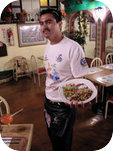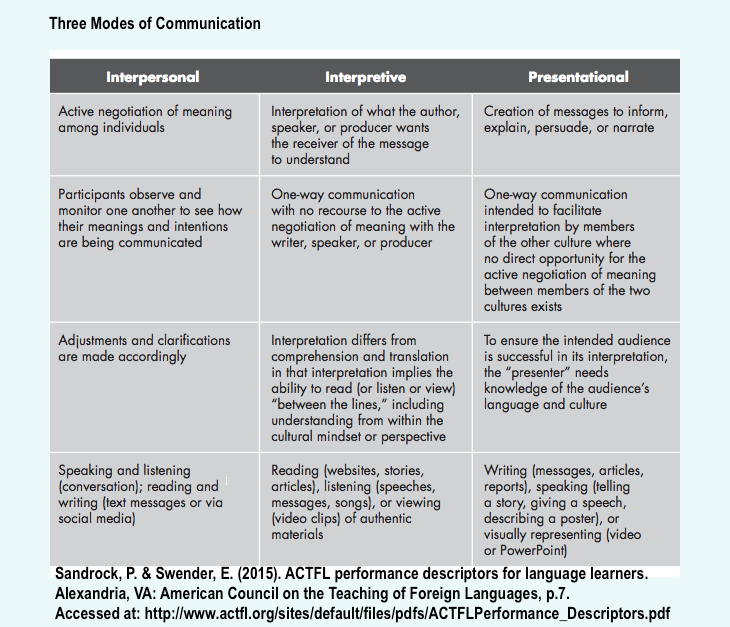2.1 – Communicating Through Visual Media
Think
Thinking about student motivation and engagement, what opportunities do the following three thematically organized activities below provide our language learners?



If you identified these as opportunities for our language learners to engage in meaningful, culturally relevant, real-world activities, you are correct!
We want our students to be able to use their language and cultural knowledge to communicate with others in authentic, culturally appropriate and meaningful ways. Visual media can provide our students insight and access into the culture and communities of the speakers of the languages we teach. Visual media can also help our students forge connections with other disciplines and help them develop their cultural competencies through comparisons with visual representations of their own culture.
The American Council on the Teaching of Foreign Languages (ACTFL (Links to an external site.)) is a major provider of support and resources for language teaching around the world. One of these important resources is the World Readiness Standards for Learning Languages (Links to an external site.). This document lists five “C” goal areas for language learning. They are:
Communication
Cultures
Connections
Comparisons
Communities
Careful use of visual media in online synchronous learning environments can help us provide our students the means to develop their skills in all five of these goals areas. Let’s now review these five goal areas through this brief summary document of the World Readiness Standards for Learning Languages (Links to an external site.). Please do this prior to our web conference today as we will apply our understandings of these important goals in our mandatory live session with Laura Terrill.
In today’s web conference, Laura Terrill will focus on how we can use images to support our students’ communicative skills in culturally meaningful and authentic ways. The Communication Standard in the World Readiness has three components: interpersonal, interpretive and presentational. In order for you to fully benefit from our session with Laura, we ask that you please read through the definitions of interpersonal, interpretive and presentational communication as displayed in the Three Modes of Communication graphic below. This is taken from page seven of the ACTFL Performance Descriptors for World Languages (Links to an external site.). ACTFL has given permission for us to use this graphic for our program.

Once you have read through the descriptors above, please take this short assessment on the modes of communication.
Due: BEFORE our web conference with Laura Terrill that will take place at 5:30 p.m. PT on Thursday, June 16
To Continue
Once you’ve completed this quiz, please continue to the next section, 2.2 – The Power of the Image: A Web Conference with Laura Terrill, so that you can prepare for our June 16 web conference with Laura Terrill.

It is important to note that everything on the web is automatically copyrighted unless otherwise noted and you must always seek permission to use this content in your online environment.
